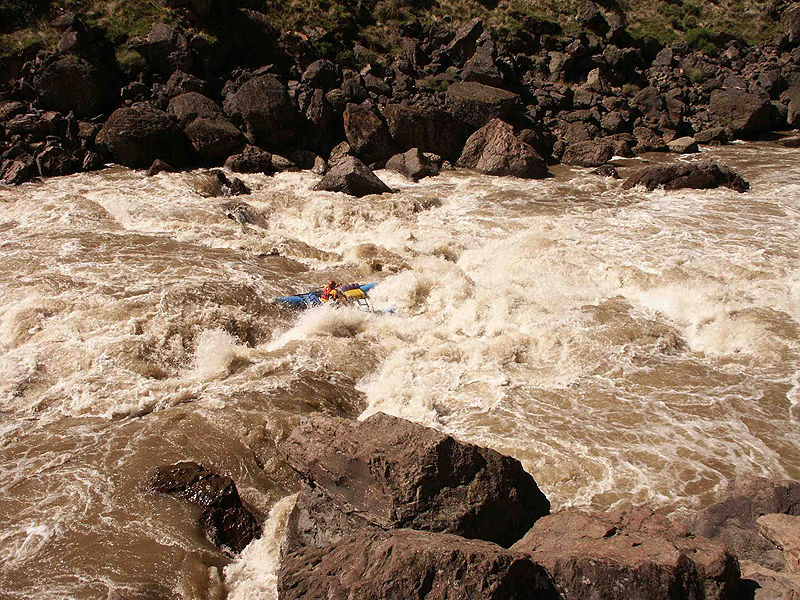On a hill high above the river we watch the water boiling below. Of course the water isn’t really boiling, it just appears that way. The turbulence is legendary. The rapid is aptly named: Widowmaker.
We look at the rapid for several minutes. The scouting trip is especially long, considering these are some of the best river runners in the world.
Everyone is excited. No one is particularly confident. No one should be. Widowmaker is one of the most feared rapids in the Intermountain West. It is why most river people steer clear of the Owyhee River, at least the middle section. But, it is the reason we came to southern Idaho, to run this wild section of river and to challenge the Widowmaker.
Some of the kayakers decide it’s too difficult and make their way back to the boats. They will carry their kayaks over this arduous hill, strewn with rocks you can’t avoid. You must step rock to rock. This is much more difficult while carrying a whitewater kayak, but to some this is preferable than attempting Widowmaker.
In catarafts, we don’t have the same options as the kayakers, but we didn’t come here to carry our boats around Wildowmaker anyway. We came here to run this section of seldom-run river. Why? Good question. Satisfaction? Ego? Bragging rights? To prove to ourselves we can do it?
The answer is probably somewhere, somehow wrapped up in all those possibilities.
All of us are in catarafts. A cataraft is made up of two inflatable tubes secured together with a metal frame. The boatman (rower) sits in the middle of the frame. The idea is that the water will go through the cataract, as opposed to picking it up as would happen in a conventional raft.
A couple of the more experienced kayakers decide to run. They get pummeled by the waves, and both end up upside down, but they are both able to roll their kayaks and are through at the bottom of the rapid. They will catch their breath, then provide safety for the rafts.
It’s an accomplishment to make it through safe in a kayak, but those little boats are ultimately more capable than any raft. A kayaker can pick his way though a rapid. A rafter is much more at the mercy of the rapid.
Ted Day, the best boatman I’ve ever known, will run first. He is too far right, gets swamped in the first hole and his boat spins sideways, but he’s able to keep the cataraft upright, gets it straightened out and somehow makes it through.
The rule is, never lose contact with your boat. If you’re thrown out or your raft capsizes, you come up as quick as possible and find your boat. You do whatever it takes to hold on. If you don’t, you may find yourself a mile downstream without a boat. Your boat may be two miles downstream. You can’t allow that to happen. So, you maintain contact with the boat, at all costs.
There are seven of us. We each pick our path and learn from what happened to those who ran before us.
I am fourth to go. I have my line picked out and hope I’ve learned from Ted and the others. Apparently I have, I hit my line perfectly, spin the boat to the miss the second hole and in a few seconds I’m at the bottom of the rapid, safe and sound. Those on shore are clapping, applauding my run. I am shocked when I raise my oar and find a seven-inch shark bite. I didn’t even know I’d hit anything. The oar blade is in my living room, a cherished trophy.
RECREATION AND TRAVEL: One of the most feared rapids – Widowmaker

widowmaker
